… nach langem Warten ist es endlich so weit: 8.6 TFlop/s Rechenleistung rollen an: das neue HPC-Cluster von Bechtle/HP mit Intel Woodcrest CPUs für die HPC-Crew an der Uni-Erlangen. Berichte über die Vertragsunterzeichnung gab es ja schon in den Erlanger Nachrichten sowie in den VDI-Nachrichten. Ein kurzer technischer Überblick findet sich in der aktuellen BI (BenutzerInformation).
Doch bis in den Rechnerraum ist es ein weiter Weg (1. OG) mit so einigen Hürden: Aufzug der im 12. OG fest steckt und Aufzugtechniker, die Stunden benötigen, bis sie an die FAU kommen. In die beiden kleinen Aufzüge passen die Racks wegen einigen Zentimetern nicht hinein. Tierisch nervende Bedienstete der Informatik, die nicht verstehen können oder wollen, dass bei so einer Anlieferung und einem nicht funktionierenden Aufzug einige sperrige Teile etwas im “Weg” stehen (müssen).
Im Rechnerraum daher noch gähnende Leere …
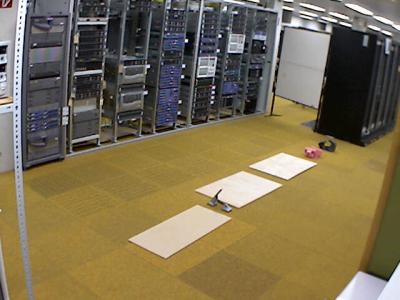
ah, unser neuer Rechner? Nein, nicht wirklich, aber vielleicht die Nutzer von übermorgen! Schlulklasse@RRZE
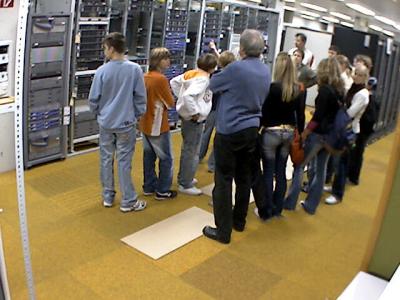
Und auch mit Aufzug und durch das Mittagessen gestärkt ist es mühsam
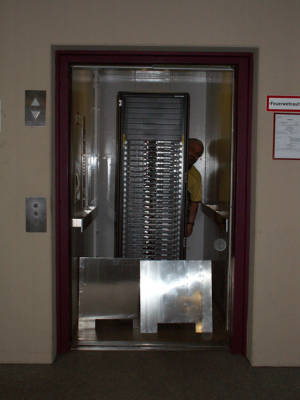
neuer Tag? Noch nicht, aber Stromsparmassnahmen …

So langsam tut sich nun wirklich etwas

wenngleich ein Rack mit rund 800 kg nicht so leicht dirigierbar ist
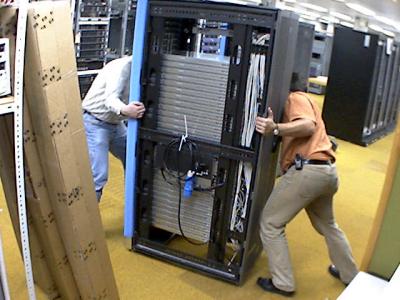
Probleme? Seit dem Aufzug eigentlich nicht mehr 🙂 Und alle Unsicherheiten über die Tragfähigkeit der Bodenplatten lassen sich schnell ausräumen.
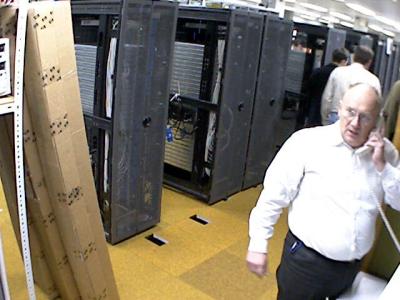
… und relativ schnell ist die Hardware dann auch weitgehend an der Stelle, an die sie soll.
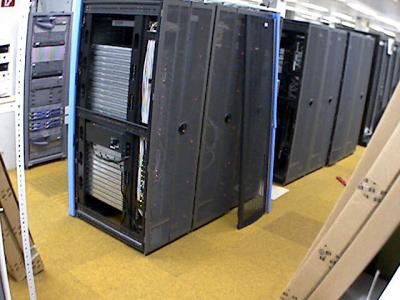
Damit ist aber natürlich die Arbeit noch lange nicht getan. Racks sauber ausrichten, verschauben, und noch ein “wenig” Konfigurationsarbeit … und der nächste Tag kommt bestimmt.
Bis zum regulären Benutzerbetrieb wird aber wohl noch einige Zeit vergehen 🙂
Abschluss von Aufbau und Konfiguration, Leistungsüberprüfung, Stabilitätstest, RRZE-Finetuning, etc. steht ja alles noch an … und nicht zu vergessen die Dokumentation auf den RRZE-Webseiten, damit nicht jeder Benutzer immer gleich bei uns anruft